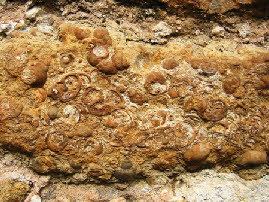Type Geological formation Country UK Underlies Atherfield Clay Formation | Unit of Wealden Group Region England Thickness up to 460 m | |
 | ||
Overlies Tunbridge Wells Sand Formation | ||
Weald Clay or the Weald Clay Formation is a Lower Cretaceous sedimentary rock underlying areas of South East England. It is part of the Wealden Group of rocks. The clay is named after the Weald, an area of Sussex and Kent. It varies from orange and grey in colour and is used in brickmaking.
The un-weathered form is blue/grey, and the yellow/orange is the weathered form; they have quite different physical properties. Blue looks superficially like a soft slate, is quite dry and hard and will support the weight of buildings quite easily. Because it is quite impermeable, and so dry, it does not get broken by tree roots. It is typically found at 750mm down below a layer of yellow clay. Yellow, found on the surface, absorbs water quite readily so becomes very soft in the winter.
The two different types make quite different bricks.
